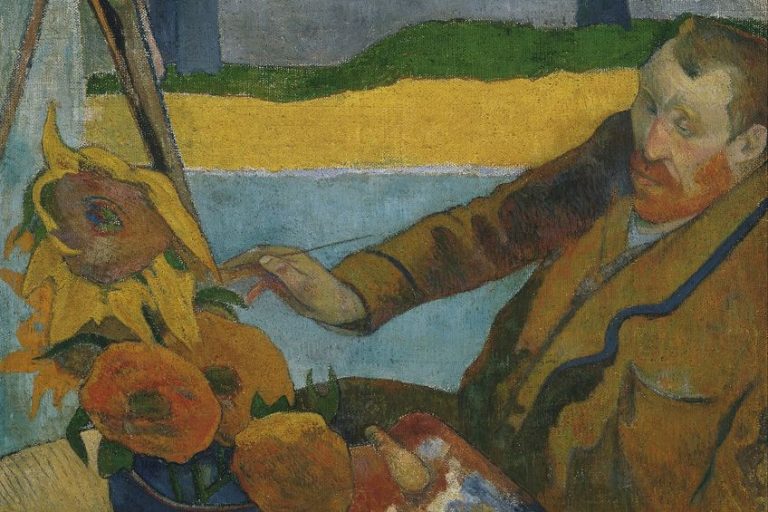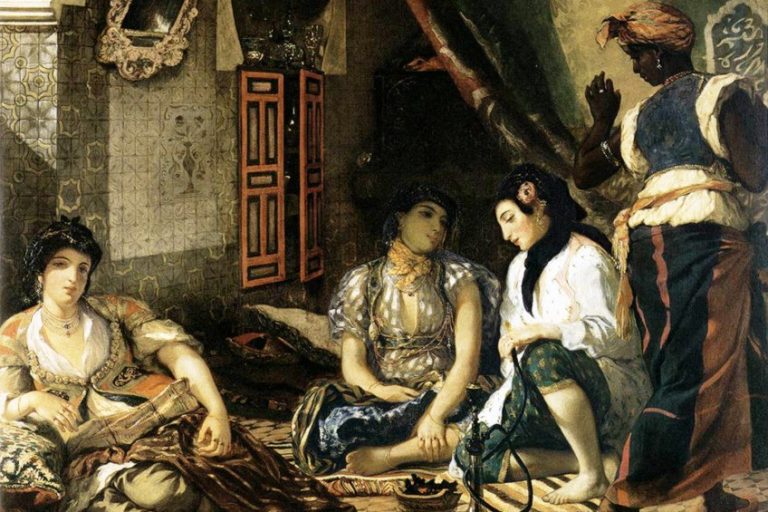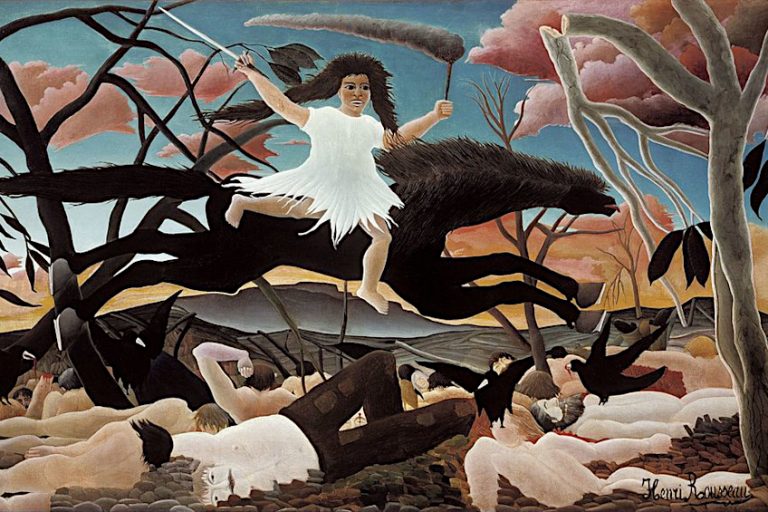Japanese Masks – Exploring the History of Masks in Japan
There are many different types of Japanese masks and each one serves a unique purpose, whether it be a Japanese Oni mask, Japanese fox mask, or Japanese cat mask. Traditional Japanese masks can be used for decorative purposes, as well as for performances and dances. But, what is the Tengu mask meaning, or the Kitsune mask meaning? This article will explore the various types of traditional Japanese masks and the distinct function each one plays.
Table of Contents
The Role of Traditional Japanese Masks
Throughout the country’s history, traditional Japanese masks have been utilized for a number of purposes. Masks are an integral component of Noh theater, a classic Japanese art form. The performers use masks to depict various figures such as devils, demons, and gods. Participants in several Japanese events also wear masks. At the Setsubun festival, for instance, individuals wear masks to frighten away evil spirits. Japanese masks have been used to guard against infections and pollutants. Doctors wore masks throughout the Edo era to protect themselves from contagious infections. Traditional Japanese masks have now become popular fashion accessories in recent years, thanks to their distinct designs and cultural relevance.
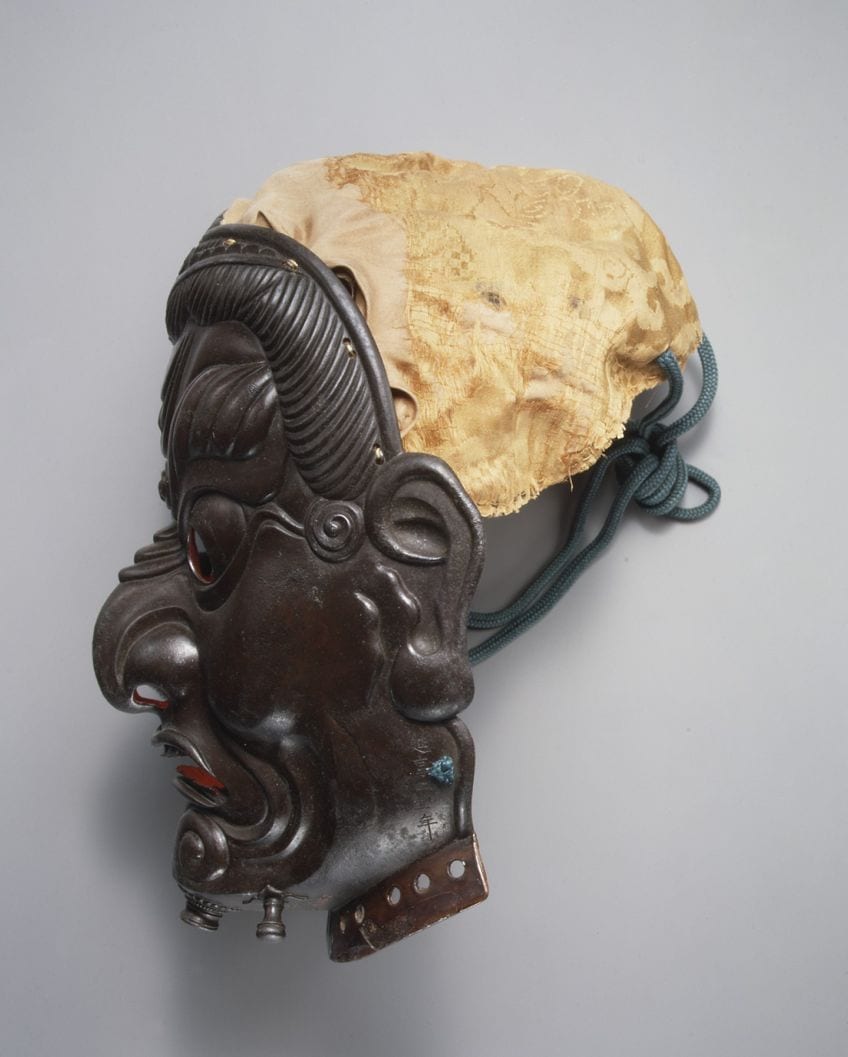
The History of Japanese Masks
Traditional Japanese masks have a long and illustrious history dating back to antiquity. Masks were first employed in Shinto rites during the Jomon era. These clay masks were used to depict different gods and demons. Masks were first used in Noh theater in the 14th century. These traditional Japanese masks were made of wood and represented various characters in the plays. The masks were intended to express the emotions and characteristics of the persons they depicted by being lifelike and detailed. The masks were also utilized to indicate the characters’ ages, genders, and social statuses, as well as to help the public follow the drama being delivered.
The usage of masks in Noh was regarded as a way of connecting with Japan’s spiritual and aesthetic roots.
Kyogen is a classic Japanese comedy genre that originated in the 14th century. Masks were also utilized in this type of theater and were frequently used to depict regular folk and servants. Kabuki theater, which originated in the 17th century, also used masks. Masks held different meanings in Japan depending on the period and setting in which they were worn. Masks were employed in Shinto rites to symbolize various deities and spirits and to solicit their presence during the event. Masks were typically fashioned of natural materials such as leaves, wood, and animal skin and were painted with symbols and colors representing the god or spirit they represented. The masks were thought to be a means of connecting with the divine and channeling the power of the spirits.
The Types of Japanese Masks
Now that we have looked at a brief history and introduced you to a few types of Japanese masks, we can look at them in greater detail. We will take a look at the various scenarios in which these masks are used as well as discuss the Tengu mask meaning, the Kitsune mask meaning, and the meanings of the other traditional Japanese masks. As we shall see, each one of these masks was unique in form and function within Japanese culture.

Noh Masks
Noh masks were invented in the 14th century, during the formative days of Noh theater. These masks were made of cypress wood and painted to look like the characters in the plays. Noh masks were designed to be extremely intricate and lifelike. The delicate features and emotions of the mask are sculpted by experienced craftsmen using ancient techniques. The masks are usually painted with a combination of mineral colors, including red and black ink, and are occasionally embellished with gold leaf or other materials.
Noh masks come in a variety of styles, each with its own distinct design and symbolism.
Female masks are usually delicate and elegant, with exquisite features and a tranquil expression. Male masks are often more rough and angular than female versions, with stronger facial characteristics and a more intense expression. Demon masks are used in the plays to portray devils and other supernatural entities. They are usually dramatic and exaggerated, with aggressive expressions and exquisite detailing.
Kabuki Masks
Kabuki theater, which goes back to the early 17th century, is a classic type of Japanese theater. It is distinguished by its lavish clothes, theatrical makeup, stylized gestures, theatrical acting style, and traditional Japanese masks. Kabuki theater is staged by an all-male ensemble, with male performers historically playing the roles of ladies and young boys. The use of lavish sets and props, as well as the emphasis on historical and mythical themes, characterizes Kabuki theater. The plays are renowned for their emotional and dramatic intensity and frequently incorporate themes of loyalty, vengeance, and honor.

Male Kabuki masks were frequently embellished with facial hair or other distinguishing traits to aid with character identification. Female kabuki masks may also be embellished with elaborate hairstyles or cosmetics to help with identifying various characters in the plays. The Older male roles are represented with Kabuki masks of old men. They are typically wrinkled and weathered, and they have a wise and contemplative appearance.
Kitsune Masks
Kitsune masks are traditional Japanese masks that depict the fox, one of Japanese folklore’s most important animals. Kitsune is a Japanese legendary creature represented as a fox with magical abilities such as shape-shifting and deception. Kitsune Japanese fox masks are often fashioned from wood, papier mache, or other materials and are painted in vivid hues like red, orange, and white. To resemble a fox, the mask may include pointy ears, sharp jaws, and fur-like elements. To enhance its appearance even further, the Japanese fox mask can be embellished with gold leaf, beads, or other materials. In Japanese culture, the fox was considered to be a crafty and cunning creature capable of both good and bad.
Foxes were usually connected with Inari, the deity of agriculture and wealth, and were thought to be endowed with supernatural abilities.
Tengu Masks
Tengu masks are a form of traditional Japanese mask that originates in Japanese mythology. The Tengu is a mythological monster in Japanese folklore that is usually represented as a bird-like goblin with a long snout and a crimson face. Tengu masks are designed to look like this mythological creature and are typically used in Japanese festivals and ceremonies. The Tengu mask is distinguished by its long nose, which is normally curled upwards and can be several inches long. The mask is usually painted in brilliant colors like white, red, and gold, and it may be embellished with hair, feathers, or other materials. To highlight the creature’s otherworldly character, the mask could also include horns or other features. The Tengu was said to be a formidable and mischievous entity with the capacity to shape-shift and govern the natural world in Japanese folklore. They were frequently described as tricksters who played pranks on humans and led them astray.

Oni Masks
Japanese Oni masks depict the Oni, a demon-like monster in Japanese folklore. The Oni are sometimes portrayed as terrifying and strong creatures with fangs, pointy horns, and wild hair. They are connected with negative characteristics like wickedness, mischief, and disorder. To accentuate the demon-like image, the mask can include exaggerated characteristics such as a huge nose, thick brows, and sharp fangs.
To further emphasize their appearance, some Japanese Oni masks feature hair or fur-like elements.
The Oni are considered strong and dangerous in Japanese culture and are typically associated with catastrophic occurrences such as disasters and accidents. They are, nonetheless, thought to have protective properties and are occasionally worshiped as potent spiritual creatures. Japanese Oni masks are worn in a variety of traditional festivals and ceremonies to ward off negative energy as well as provide good luck. Oni masks are also utilized in theatrical plays and performance art, like Kabuki and Noh theater, to portray demon-like characters from ancient myths and legends.
Hyottoko Masks
In Japanese legend, Hyottoko is commonly depicted as a comical and eccentric character with the ability to create sparks and flames from his lips. He is also occasionally portrayed as a trickster who likes pulling practical jokes on people. Hyottoko masks are used in traditional Japanese theater forms such as Kyogen and Noh theater to portray the Hyottoko figure in ancient stories and legends. They are often worn during festivals and ceremonies to amuse the audience and provide good luck. Hyottoko masks are now popular ornamental pieces and collectibles, and they are occasionally incorporated into modern art and fashion to express a sense of fun and comedy. The exaggerated facial characteristics of the Hyottoko mask include protruding eyes, a huge skewed mouth, and a flat nose, and is usually painted in vibrant colors.
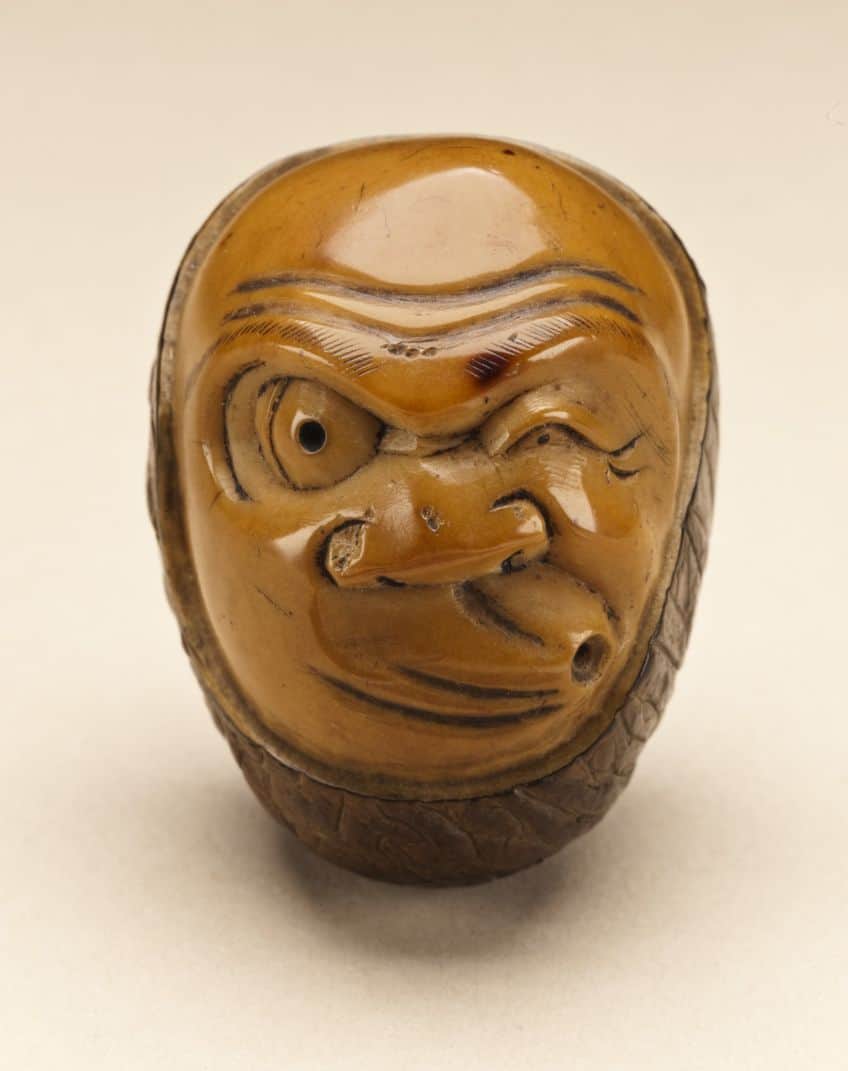
Nekomata Masks
The Nekomata mask is usually made of paper mache or wood and painted in brilliant colors. The mask resembles a cat, and exaggerated characteristics, such as lengthened teeth may also appear on certain Nekomata Japanese cat masks. Nekomata is a species of magical cat in Japanese mythology that has the capacity to turn into a human and is commonly connected with death and the afterlife.
The entity is said to have extraordinary abilities, including the capacity to govern the dead and conjure ghosts.
Hannya Masks
Hannya masks are a form of Japanese traditional mask that depicts a female monster from Japanese folklore. Hannya’s mask has sharp, exaggerated features that represent the demonic aspect of the character it depicts. The mask is generally shown with horns, pointed teeth, and a characteristic “snarl” that is said to reflect the female demon’s rage and suffering. The Hannya demon is generally portrayed in Japanese mythology as an angry spirit who haunts the living in order to seek retribution for past wrongs. The figure is sometimes described as a jealous and possessive lady who was deceived by a lover and then changed into a demon. This type of mask is often used to instill dread and anxiety in the audience, as well as to represent the wrath and menace of the Hannya monster. Hannya masks are now sometimes employed in fashion to create a feeling of defiance and edginess.

The Manufacture of Japanese Masks
Creating a Japanese mask often involved multiple stages, including the selection of materials, the fabrication of a mold, and the application of color and other ornamentation. Wood, papier mache, clay, and fabric were among the materials used to create traditional Japanese masks. Wood was the most often used material for carving masks, while papier mache was employed for lightweight and long-lasting masks. Clay masks were also popular at various times, particularly for making masks for use in outdoor festivals and celebrations. An artist would normally begin by carving a mold of the appropriate shape directly into the material or using a separate mold to produce a Japanese mask.
The mold could subsequently be used as a template to shape the mask, either by sculpting it further or by adding materials such as papier mache onto the mold until the necessary thickness was achieved. When the mask was formed, it was painted and embellished with materials like gold leaf and fur.

Layers of paint were added, with different colors utilized to create elaborate motifs and details. Lastly, a layer of lacquer was applied to the mask to preserve it and give it a glossy appearance. The components and processes used to create traditional Japanese masks have developed and altered over time. Modern artists can utilize a broader range of materials and methods, such as resin, fiberglass, and plastic, to make more robust and long-lasting masks.
Japanese Masks in the Modern World
Many artists, though, continue to employ traditional techniques and materials, particularly when producing masks for use in traditional performances and celebrations. Japanese masks continue to play an essential role in traditional Japanese culture in the modern world, including diverse types of dance, theater, and festivals. Traditional mask usage has been conserved and is being handed down from generation to generation, particularly in rural Japan.
Japanese masks have also gained popularity outside of formal settings and have been modified for application in pop culture and fashion.
Japanese masks have grown in popularity as a fashion item in recent years, especially with young people in Japan and throughout the world. Masks based on traditional Japanese designs have found their way into modern fashion, such as street fashion, cosplay, and even high fashion. Japanese masks have also served as inspiration for various types of pop culture media, such as manga, anime, and video games. Figures in these mediums typically wear masks based on traditional Japanese designs, such as Hannya or Kitsune masks.

These masks have become famous emblems of Japanese pop culture, and they are commonly employed as promotional tools for companies and media. Also, as a result of the COVID-19 epidemic, mask use has increased in Japan and across the world. Masks became commonplace in public places and were seen as a vital accessory for preventing the virus’s transmission. Many Japanese businesses responded by creating masks based on traditional Japanese masks. While the various types of Japanese masks of the past may be rooted in ancient Japanese folklore, it seems that they are still very much in vogue today.
Stretching back many hundreds of years, the art of making Japanese masks is deeply entrenched in Japanese culture and history. It is also a very significant part of the retelling of Japanese folklore, theater, and arts. Japanese masks maintain a major presence in both traditional and contemporary culture. Masks have been adopted for usage in fashion and pop culture, becoming famous icons of Japan’s cultural legacy.
Frequently Asked Questions
What Is the Tengu Mask Meaning and Significance?
The Tengu mask is used in traditional Japanese theater, such as plays and shows, that involve the Tengu as a character. The Tengu mask features a large nose to represent the Tengu’s magical abilities and capacity to breathe fire. The Tengu is seen as a protector and bringer of good fortune, and its mask can be used as a talisman to fend off evil spirits. The mask has also become a popular ornamental piece, and it may be used as a good luck charm that is meant to bring wealth to the person who wears it. This creature is seen as both a protector and a trickster, and its mask is thought to embody these two elements of its personality.
Are Japanese Masks Popular Outside of Japan?
With their distinctive and detailed patterns, Japanese masks, especially those worn in traditional Japanese performances such as Kabuki theater, have received worldwide appreciation. Masks influenced by Japanese culture have also gained popularity in the fashion and entertainment industries. Japanese masks are popular in the United States among anime and manga lovers. Traditional Japanese masks are also popular in many Asian nations, such as South Korea, China, and Taiwan. However, due to their long legacy of traditional use in Japanese culture, the various types of Japanese masks are still mostly appreciated and utilized by the Japanese people themselves.
Isabella studied at the University of Cape Town in South Africa and graduated with a Bachelor of Arts majoring in English Literature & Language and Psychology. Throughout her undergraduate years, she took Art History as an additional subject and absolutely loved it. Building on from her art history knowledge that began in high school, art has always been a particular area of fascination for her. From learning about artworks previously unknown to her, or sharpening her existing understanding of specific works, the ability to continue learning within this interesting sphere excites her greatly.
Her focal points of interest in art history encompass profiling specific artists and art movements, as it is these areas where she is able to really dig deep into the rich narrative of the art world. Additionally, she particularly enjoys exploring the different artistic styles of the 20th century, as well as the important impact that female artists have had on the development of art history.
Learn more about Isabella Meyer and the Art in Context Team.
Cite this Article
Isabella, Meyer, “Japanese Masks – Exploring the History of Masks in Japan.” Art in Context. February 1, 2024. URL: https://artincontext.org/japanese-masks/
Meyer, I. (2024, 1 February). Japanese Masks – Exploring the History of Masks in Japan. Art in Context. https://artincontext.org/japanese-masks/
Meyer, Isabella. “Japanese Masks – Exploring the History of Masks in Japan.” Art in Context, February 1, 2024. https://artincontext.org/japanese-masks/.





